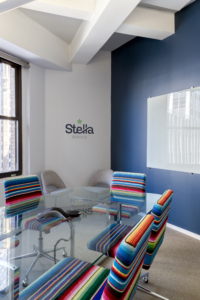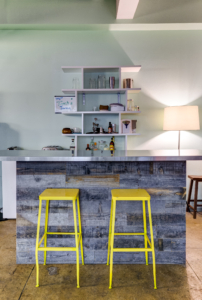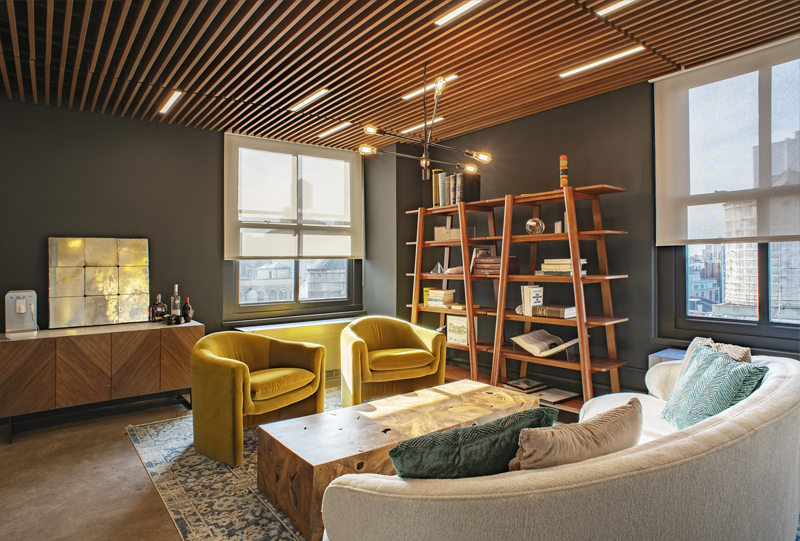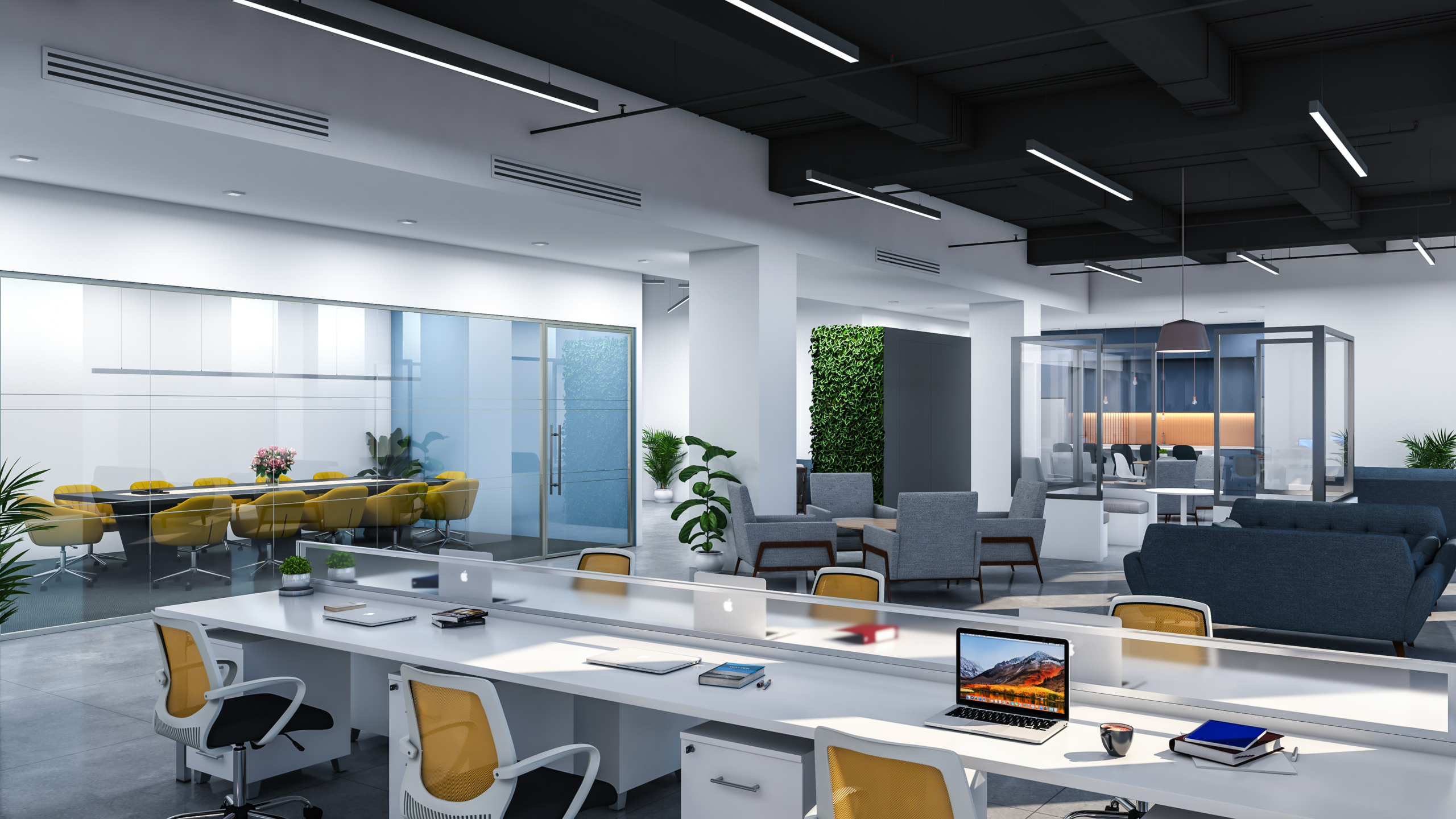
After almost two years of working from home and almost two years of curating possibly the most perfect at-home work environment, returning to the office or choosing a new office space can feel flat and bland. While most at-home setups allow for colored walls, minimal confinement, personal items, live plants and open windows, a lot of offices are welcoming back employees with row upon row of bland, neutral toned cubicles. With the idea of “hot-desking” growing or team members sharing collaborative workspaces, even livening up your personal space with live plants and personal pictures gets difficult, resulting in a less than inspired work environment. The opportunity lies in selecting some elements, accents and paint in colors that best represent your company culture and inspires rather than dulls the senses.
Office energy is driven by color:
Choosing from a company’s branding palette can make sense for a lobby or waiting area, it can become too much for the whole space. Consider the impact of these colors:
-
Greens: Green is a great color to use when you want to create a calm and relaxed environment. Adding green plants as an accent color behind computers or simply around the office offers a rejuvenated feel while reducing eye fatigue. See more suggestions for using green in our post on biophilic design.
-
Blues: Blue promotes deeper thinking and creativity. Adding blue elements around collaborative areas or even on the ceiling helps promote an imaginative mind and increased productivity.

Reds: Red brings a sense of urgency while increasing energy. Think a fire truck coming down the street. In a fast paced office, this may be the perfect accent color to motivate team members or draw attention to important areas. As an accent color in furniture, it can liven up a drab or flat room. Combining the forces of red and blue in to purple becomes the perfect combination of a high energy, creative space perfect for meetings and collaborative spaces.
-
Yellows: Yellow is well known for bringing happiness and optimism. Having yellow around the office brings small bouts of joy and adds new life to a room. But use in small doses. Too much yellow and team members can be overwhelmed and experience anxiety. Try incorporating yellow in art work or as an accent chair.
-
Whites: White may sound counterintuitive, but is a great color to breakup all the other colors you may utilize. White is a great option to make a space feel larger; adding white walls to phone rooms or small meeting rooms help open up a space that otherwise feels suffocating.
An office does not have to go from bland and gray to a lively rainbow; we would never recommend incorporating all these colors in the same office. If an office currently has white walls, colors can be added cost efficiently in accent chairs, art, paint and other accessories. The opportunities to incorporate color certainly don’t stop there; tile, glass, dividers and workstations can also help encourage the impact you are looking to promote.
Choosing the colors that best match the needs and culture of a company can be something an entire office has input on; it helps give everyone the chance to claim ownership in their space and increase interest in returning back to an office. Working with an architect or interior designer, depending on the elements you’ll want to impact, can help you find worthwhile, inspiring ways to give your office the energy that will make you the most productive.




Leave A Comment